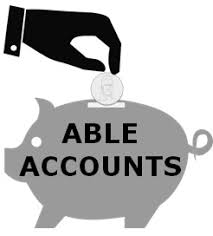If you have a loved one with disabilities, you may be familiar with ABLE accounts, authorized by Congress in 2014 under the Achieving a Better Life Experience Act.
States can offer ABLE accounts to help people who become disabled before age 26 and their families save and pay for disability-related expenses. These expenses include housing, education, transportation, health, prevention and wellness, employment training and support, assistive technology and personal support services. Though contributions aren’t deductible for Federal tax purposes, distributions, including earnings, are tax-free to the beneficiary, as long as they are used to pay qualified disability expenses. The Florida Legislature has adopted appropriate legislation and has designated ABLEUnited as the approved program for Florida.
ABLE accounts are tax advantaged savings accounts similar to 529 education savings plans whose funds can be used to pay for certain qualifying expenses of disabled individuals. As a result of the Tax Cuts and Jobs Act (TCJA), that was signed into law by President Trump, there are several changes that positively impact ABLE accounts.
What You Should Know About Changes to ABLE Accounts
First, a 529 account can now be rolled over to an ABLE account. However, the ABLE account must be for the same beneficiary as the 529 account or for a member of the same family. Previously, families who originally funded a 529 account for a child whose disability manifested later in life would suffer a tax penalty if the funds were withdrawn from the 529 account to over medical expenses because they were not allowable education expenses. Now those same funds, through the use of the rollover, can be made available for the beneficiary’s disability related expenses. There are limits as to how much can be rolled over, so it is important to discuss any changes to a 529 plan with your tax professional.
Second, a beneficiary of an ABLE account can now contribute their personal earned income into their own account. The maximum amount a beneficiary can contribute is equal to the annual federal poverty level for a one person home ($12,490.00 in 2019 in the continental United States and the District of Columbia). These contributions, however, are separate and apart from contributions made to the ABLE account by other individuals (family members, friends, estates, trusts, etc.). Further, a working beneficiary will not be eligible to contribute their own money to the ABLE account if their employer contributes to a workplace retirement plan on his or her behalf.
Other requirements for the income contribution include it must be the lessor of:
- The designated beneficiary’s compensation for the tax year
- The poverty line for a one-person household. For 2019, this amount is $12,490 in the continental U.S., $13,960 in Hawaii and $15,180 in Alaska
Third, those beneficiaries who contribute to their own ABLE account, as opposed to others who contribute to the account, may be eligible for the Saver’s Credit. Up to $2,000 of the contributions made by ABLE account beneficiaries may be eligible for this credit. This may help lower any income tax owed by the beneficiary or help increase any refund the beneficiary may be entitled to. There are, however, additional requirements that need to be met and it is important to check with an experienced professional to determine what credits may be available for a beneficiary who contributes to their own account.
Those additional requirements include:
- Are at least 18 years old at the close of the taxable year
- Are not a dependent or a full-time student
- Meet the income requirements
Know Your Options for an ABLE Account and Special Needs Trust
It is important to know that ABLE accounts, as well as special needs trusts, have an underlying purpose: to supplement, not replace, the benefits and services provided by government programs like Medicaid and Supplemental Security Income (SSI).
If you have a loved one with special needs, contact us to help guide you through the process of creating a plan that best suits your family’s needs, whether it is a special needs trust, an ABLE account, or other planning needs and objectives.
